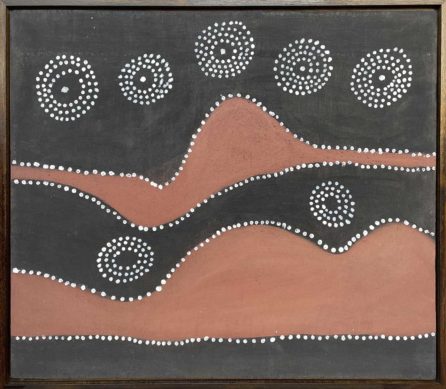 Jack Britten | Kalanganaring – Ord River CountryJap 020692 | ochre on board | 80 x 70 cm
Add To Enquiry Cart ► How To buy
| 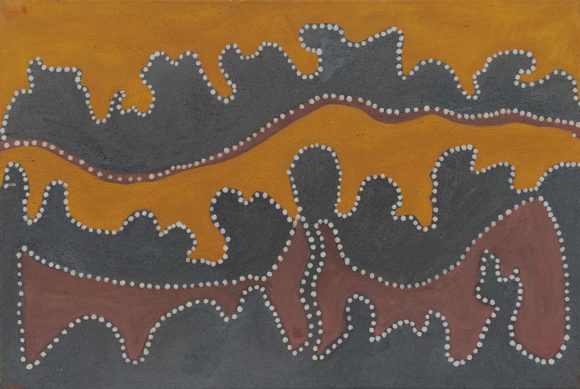 Jack Britten | Gwali-wali Country – Ord RiverJap 019369 | ochre on canvas | 80 x 60 cm
Add To Enquiry Cart ► How To buy
| 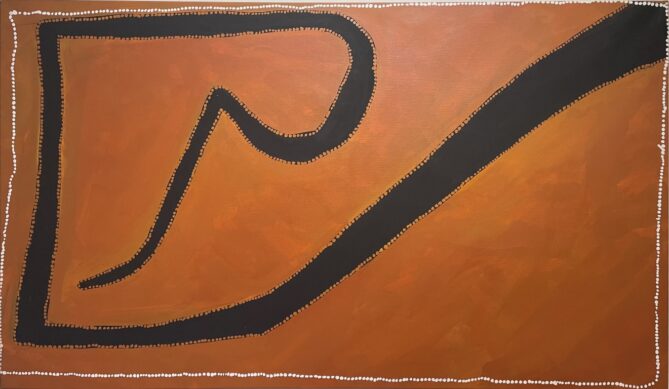 Rover Thomas | Cyclone Tracy – Lightning BoltJap 022209 | ochre on linen | 195 x 113 cm
Add To Enquiry Cart ► How To buy
| 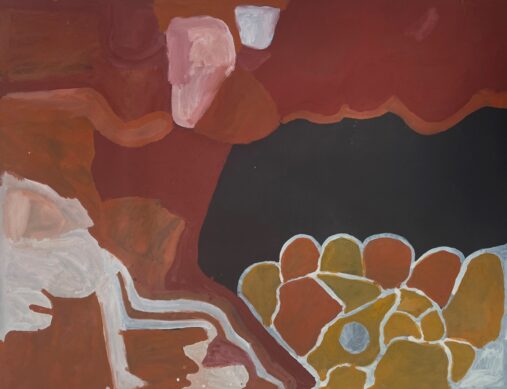 Willie Kew | All the Hills at NyirlaJap 003553 | ochre on canvas | 141 x 105 cm
Add To Enquiry Cart ► How To buy
| 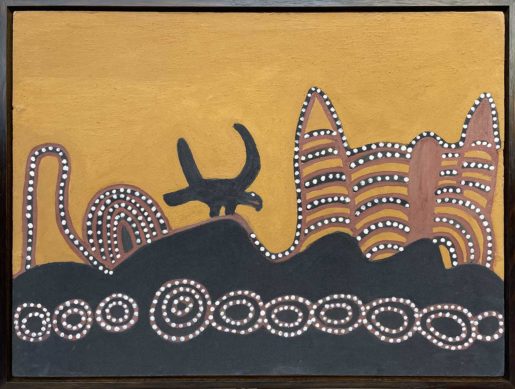 Jack Britten | Kulkunji – Chicken Hawk DreamingJap 020694 | ochre on board | 75 x 38 cm
Add To Enquiry Cart ► How To buy
| 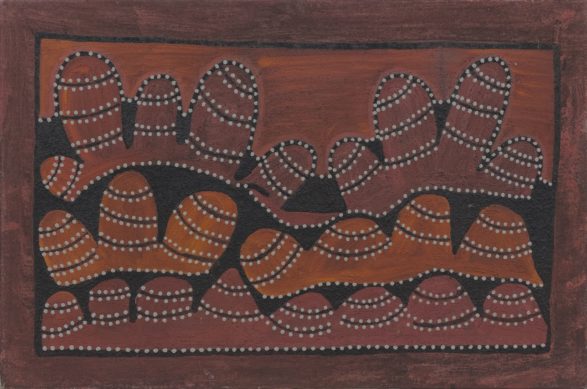 Sade Carrington | Palm Vallery, Bungle BunglesJap 020854 | ochre on linen | 90 x 60 cm
Add To Enquiry Cart ► How To buy
| 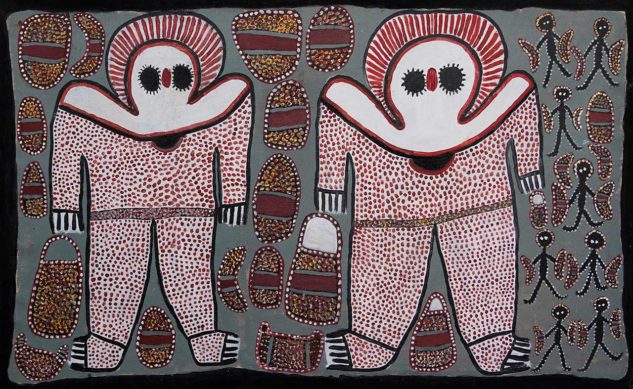 Lily Karadada | Wandjina Rain SpiritJap 015823 | ochre on canvas | 120 x 90 cm
Add To Enquiry Cart ► How To buy
| 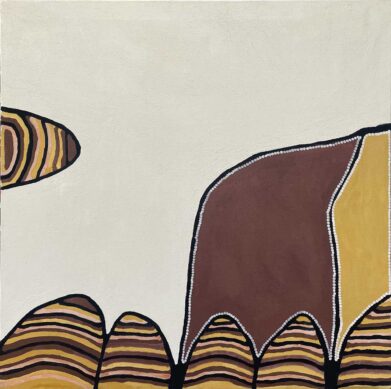 Freddie Timms | Biganinny Gorge – Bungle BunglesJap 022597 | ochre on linen | 120 x 120 cm
Add To Enquiry Cart ► How To buy
| 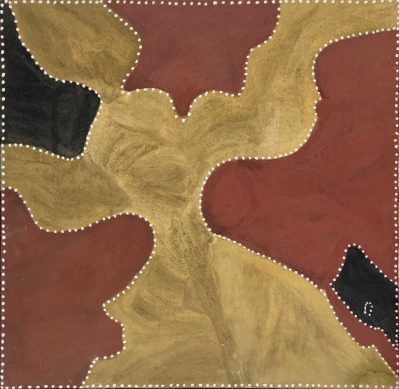 Churchill Cann | Old Texas WayJap 018516 | ochre on linen | 120 x 120 cm
Add To Enquiry Cart ► How To buy
| 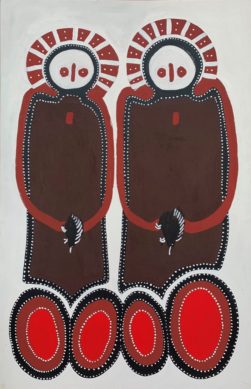 Jack Dale Mengenen | Two Wandjinas and EchidnasJap 003767 | ochre and pigments on canvas | 182 x 115 cm
Add To Enquiry Cart ► How To buy
| 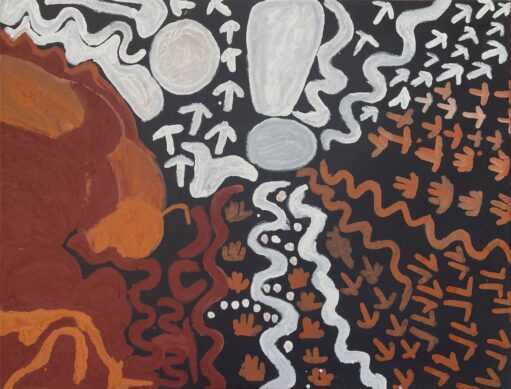 Willie Kew | Nyirla – My CountryJap 003555 | ochre on canvas | 140 x 106 cm
Add To Enquiry Cart ► How To buy
| 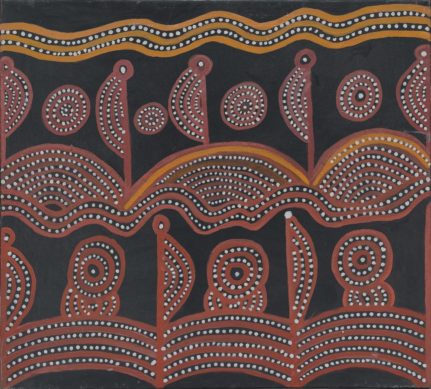 Jack Britten | MyanjiJap 019539 | ochre on canvas | 100 x 90 cm
Add To Enquiry Cart ► How To buy
| 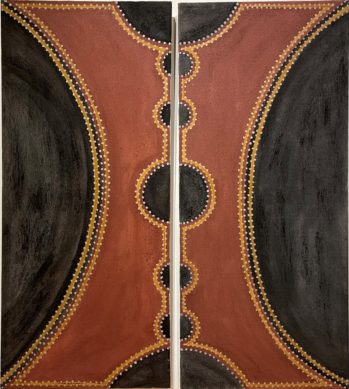 Charlene Carrington | Texas RockholeJap 011929 | ochre on linen | 160 x 70 cm
Add To Enquiry Cart ► How To buy
| 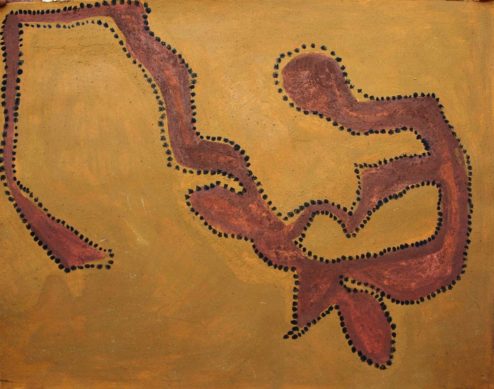 Rover Thomas | KunawarritjiJap 006145 | ochre on Arches paper | 65 x 51 cm
Add To Enquiry Cart ► How To buy
| 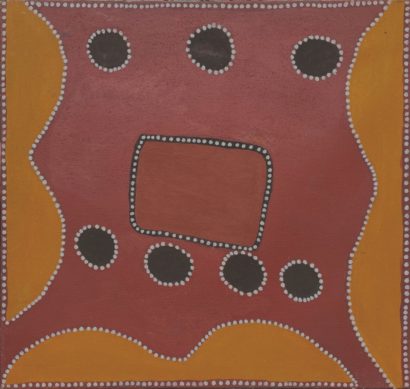 Henry Wambini | Meeruny – Red Ochre CountryJap 020856 | ochre on linen | 100 x 95 cm
Add To Enquiry Cart ► How To buy
| 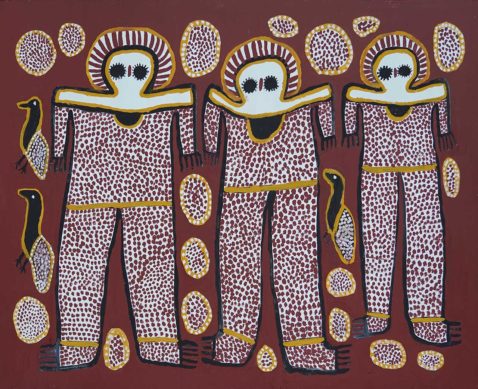 Lily Karadada | Three WandjinaJap 004002 | ochre on plyboard | 120 x 90 cm
Add To Enquiry Cart ► How To buy
| 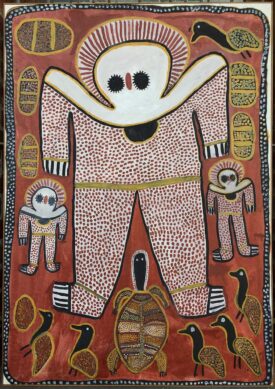 Lily Karadada | WandjinaJap 021956 | Ochre on canvas | 132 x 90 cm
Add To Enquiry Cart ► How To buy
| 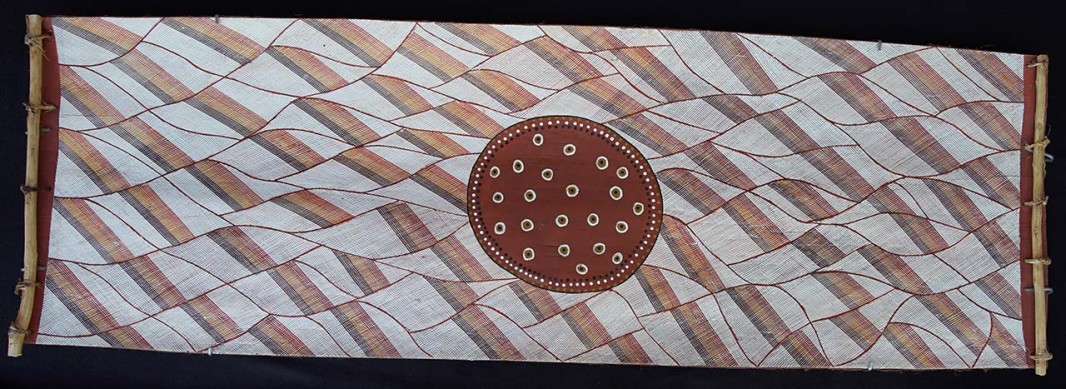 Hamish Garrgarrku (Karrkarrhba) | Waterhole at BarlpamarraJap 011576 | ochre on bark | 150 x 48 cm
Add To Enquiry Cart ► How To buy
| 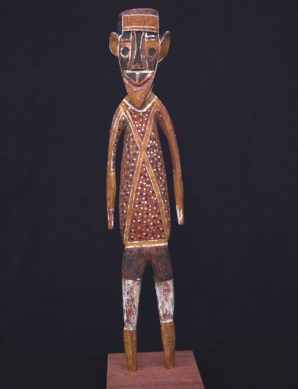 Arnhemland carving | Carved FigureJap 013901 | ochre on wood | height 46 cm
Add To Enquiry Cart ► How To buy
|  Jack Dale Mengenen | Djunba DancerJap 006407 | ochre on linen | 200 x 130 cm
Add To Enquiry Cart ► How To buy
| 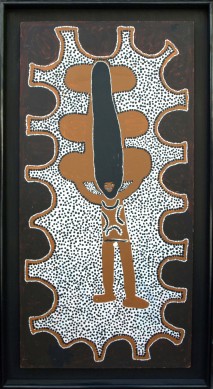 David Downs | KurtalJap 009885 | acrylic and ochre on board | 120 x 60 cm
Add To Enquiry Cart ► How To buy
| 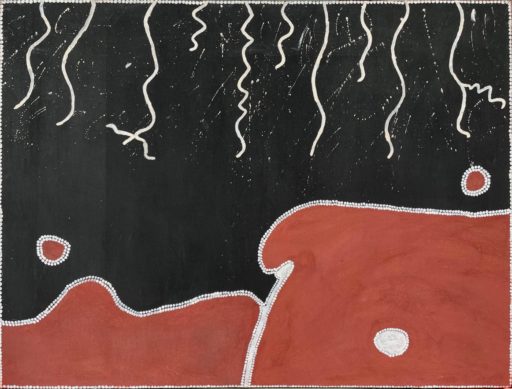 Freddie Timms | Lightning over Dabaruny SpringsJap 019538 | ochre on linen | 160 x 120 cm
Add To Enquiry Cart ► How To buy
| 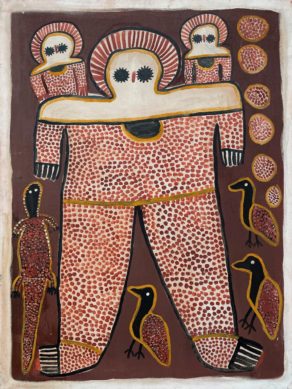 Lily Karadada | Wandjina – Rain SpiritJap 019537 | ochre on linen | 122 x 92 cm
Add To Enquiry Cart ► How To buy
| 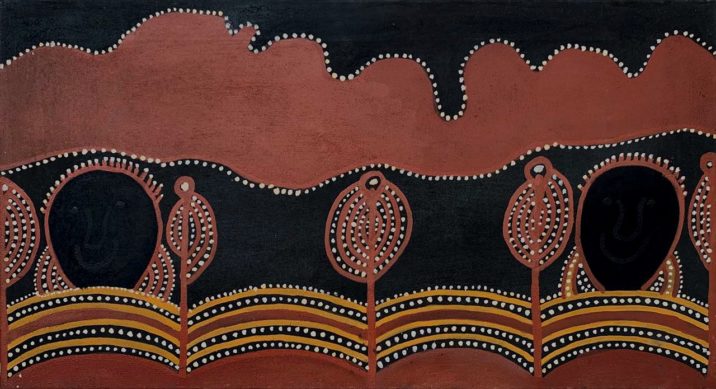 Jack Britten | Milliwiny Springs – Alice DownsJap 018270 | ochre on canvas | 110 x 60 cm
Add To Enquiry Cart ► How To buy
| 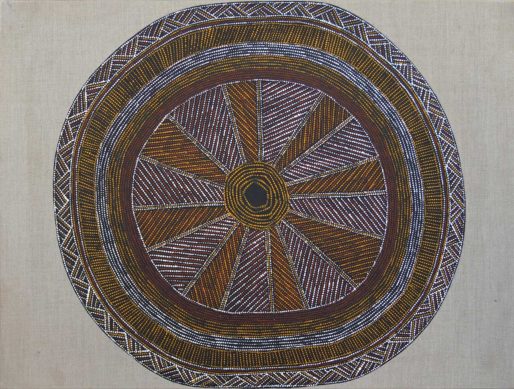 Raelene Kerinauia Liddy | Miyaringa JilamaraJap 018024 | natural ochres on linen | 120 x 90 cm
Add To Enquiry Cart ► How To buy
| 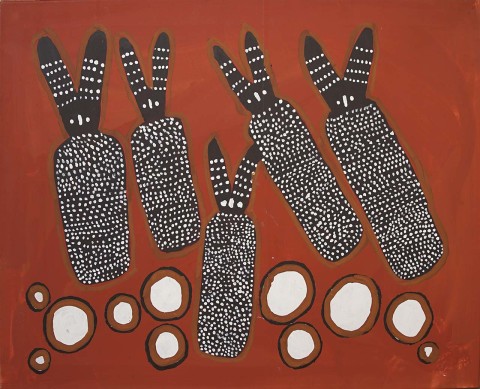 Jack Dale Mengenen | Wandjinas from ArawadiJap 003590 | ochre on canvas | 94 x 122 cm
Add To Enquiry Cart ► How To buy
| 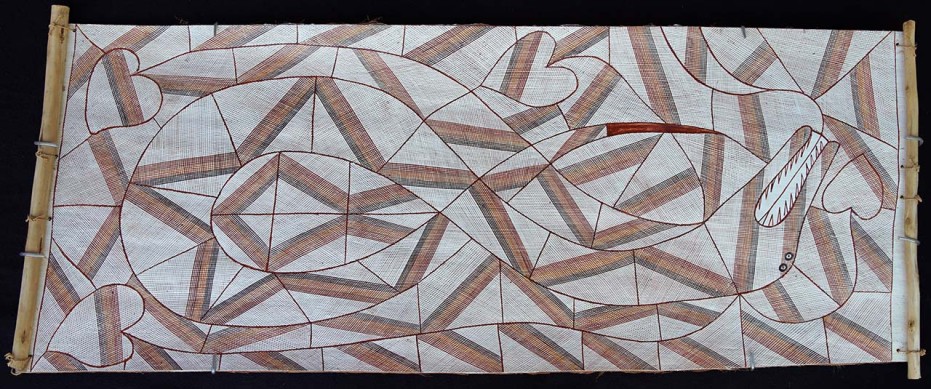 Hamish Garrgarrku (Karrkarrhba) | Ngalyod – Rainbow SerpentJap 011573 | ochre on bark | 132 x 50 cm
Add To Enquiry Cart ► How To buy
| 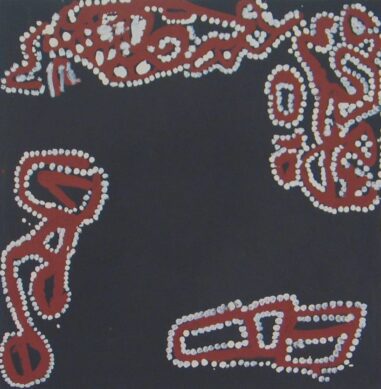 Peter Goodijie | Kulyayi – Artist’s CountryJap 003181 | ochre on canvas | 85 x 84 cm
Add To Enquiry Cart ► How To buy
| 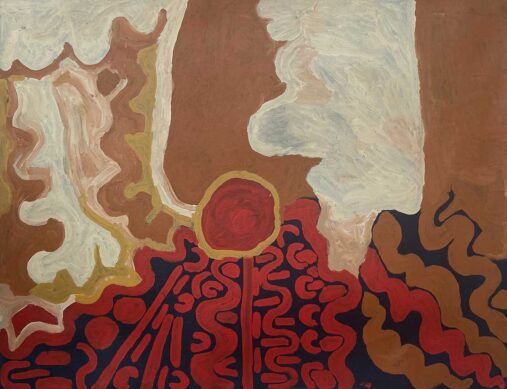 Willie Kew | Travelling in Nyirla CountryJap 003527 | acrylic on canvas | 111 x 84 cm
Add To Enquiry Cart ► How To buy
| 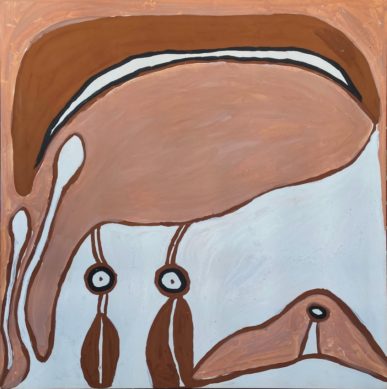 Jack Dale Mengenen | Mustering Yards at Dora CreekJap 003588 | ochre & pigments on linen | 128 x 128 cm
Add To Enquiry Cart ► How To buy
| 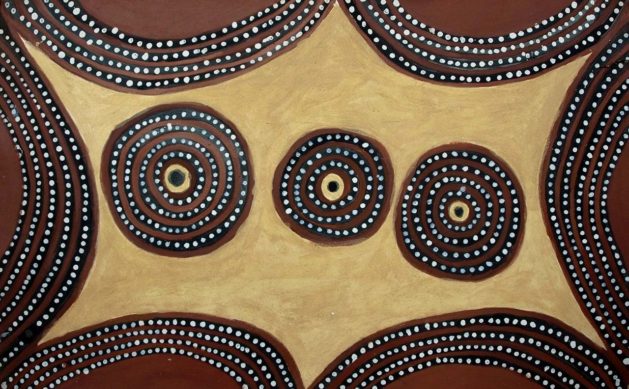 Jack Britten | Boolanji – Fish HoleJap 006148 | ochre on Arches paper | 105 x 65 cm
Add To Enquiry Cart ► How To buy
| 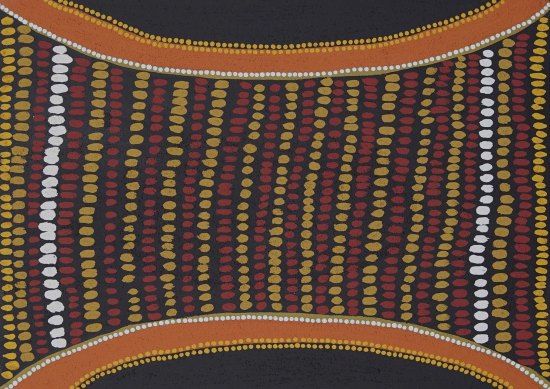 Marcia Purdie | Spearhead Dreaming – JimbirlaJap 011299 | ochre on canvas | 61 x 46 cm
Add To Enquiry Cart ► How To buy
|  Shirley Purdie | Barramundi DreamingJap 022596 | acrylic on canvas | 122 x 91 cm
Add To Enquiry Cart ► How To buy
| 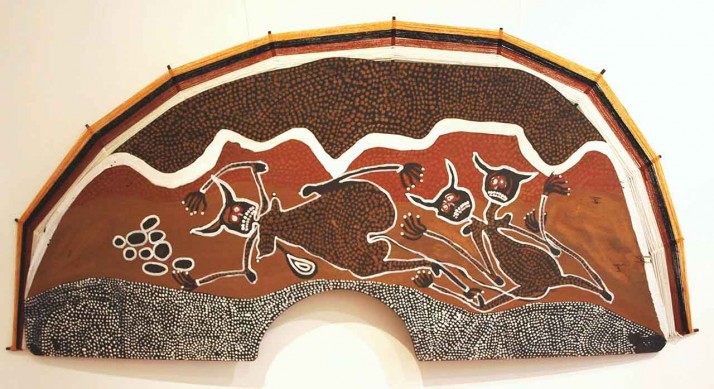 Jack Dale Mengenen | Argula Djunba – Dance BoardJap 006401 | ochre on board | 139 x 92 cm
Add To Enquiry Cart ► How To buy
| 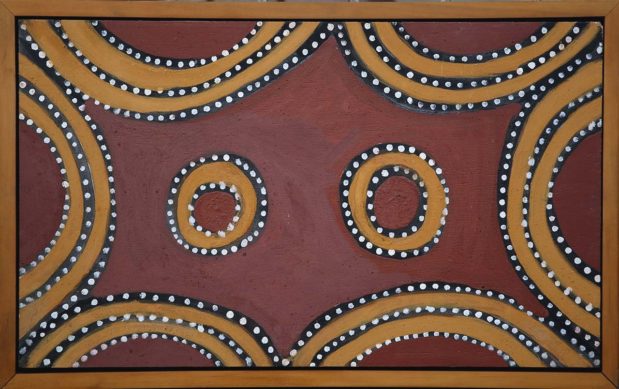 Jack Britten | ToolookwuningJap 010412 | ochre on board | 68 x 40 cm
Add To Enquiry Cart ► How To buy
| 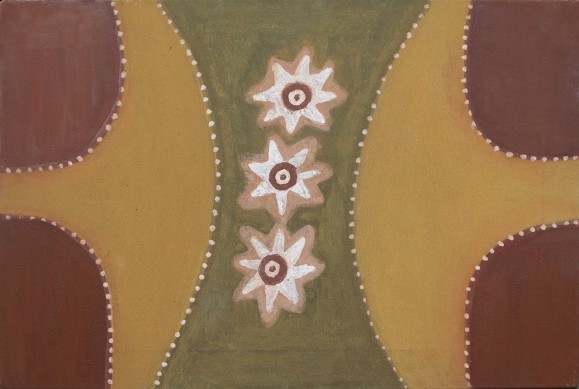 Hector Jandanay | Maran Maranji RockholeJap 012536 | ochre on canvas | 90 x 60 cm
Add To Enquiry Cart ► How To buy
| 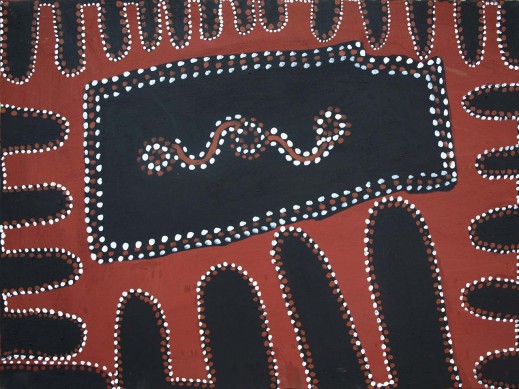 Ned Johns | InverwayJap 000816 | ochre on linen | 118 x 88 cm
Add To Enquiry Cart ► How To buy
| 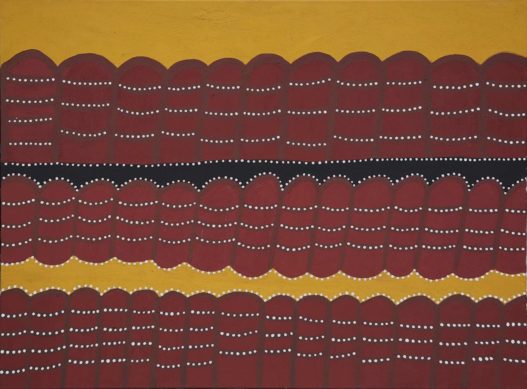 Sade Carrington | Sunrise over PurnululuJap 000927 | ochre on canvas | 101 x 76 cm
Add To Enquiry Cart ► How To buy
| 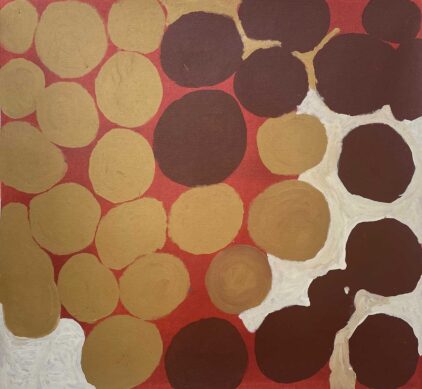 Willie Kew | Round Hills at NyirlaJap 003462 | acrylic on canvas | 84 x 77 cm
Add To Enquiry Cart ► How To buy
| 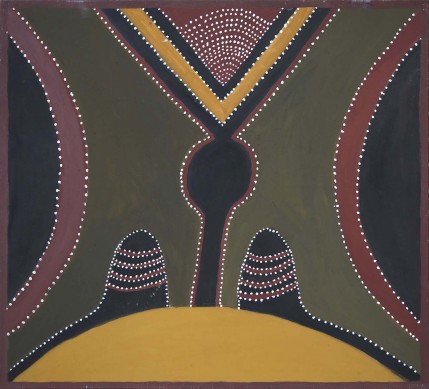 Hector Jandanay | UntitledJap 010496 | ochre on linen | 135 x 122 cm
Add To Enquiry Cart ► How To buy
| 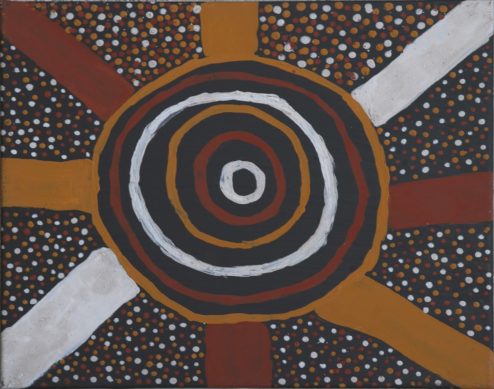 Timothy Cook | KulamaJap 009441 | ochre on linen | 52 x 45 cm
Add To Enquiry Cart ► How To buy
| 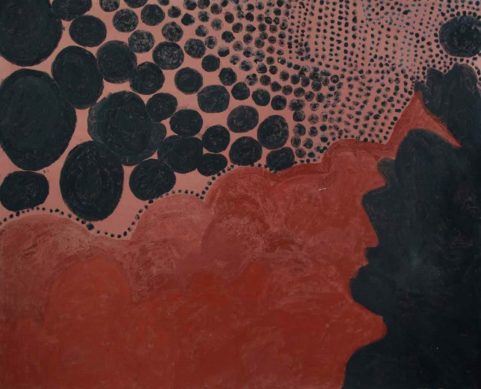 Willie Kew | Nyirla RockholeJap 006304 | ochre on canvas | 117 x 96 cm
Add To Enquiry Cart ► How To buy
| 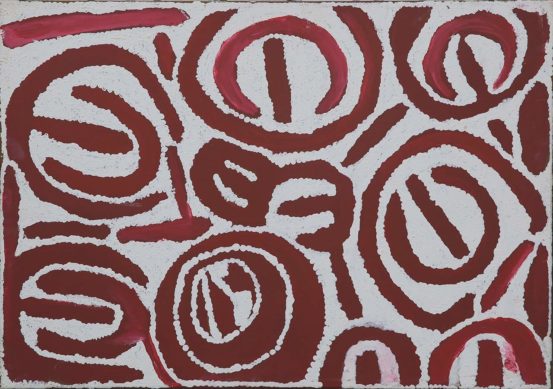 Billy Thomas | UntitledJap 010503 | ochre on canvas | 70 x 50 cm
Add To Enquiry Cart ► How To buy
| 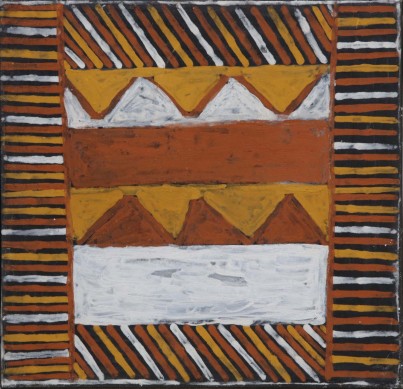 Ian Cook | Jilamara – Body Paint DesignJap 009676 | ochre on linen | 48 x 48 cm
Add To Enquiry Cart ► How To buy
|












































